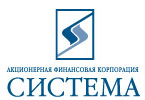|
|
|
 |
Virtual Tours round the Russian Museum The Mikhailovsky Palace |
     |
The Russian Museum
»
The Mikhailovsky Palace
»
Room 26
Room 26Nikolai Ge (1831–1894) reinterpreted the Last Supper (1863) in the light of the problems of the 1860s. His picture caused a sensation when it was revealed at the 1863 exhibition of the St Petersburg Academy of Arts. Visitors recognised Alexander Herzen, publisher of the émigré almanac Bell, in the figure of the apostle Paul. The motif of The Last Supper had been invoked by various artists before, only now it took on a whole new and topical significance for contemporaries. They associated it with the split that had developed in the revolutionary movement. Others interpreted the Gospel subject as the tragedy of a man who foresees his betrayal by a fellow comrade, yet prepares to sacrifice himself. Ge’s picture thus transforms the biblical legend into a psychological and moral drama. During the last period in his career, Nikolai Ge concentrated on Gospel themes, painting a series of works dedicated to the life of Jesus Christ. In 1882, he met Leo Tolstoy, becoming a convinced follower of his religious and moral teachings. Like the famous Russian writer, he also addressed important philosophical issues in his art. In 1884, Ge painted a portrait of Tolstoy at his house in Khamovniki, where the writer was working on What I Believe. Resolved in the traditions of Russian Realism, the portrait depicts Tolstoy working in an everyday setting. Ge wanted to show the writer’s mind and the course of his thoughts. The artist portrays Tolstoy as a teacher engaged in his own work. |
The Project “The Russian Museum: the Virtual Branch” |